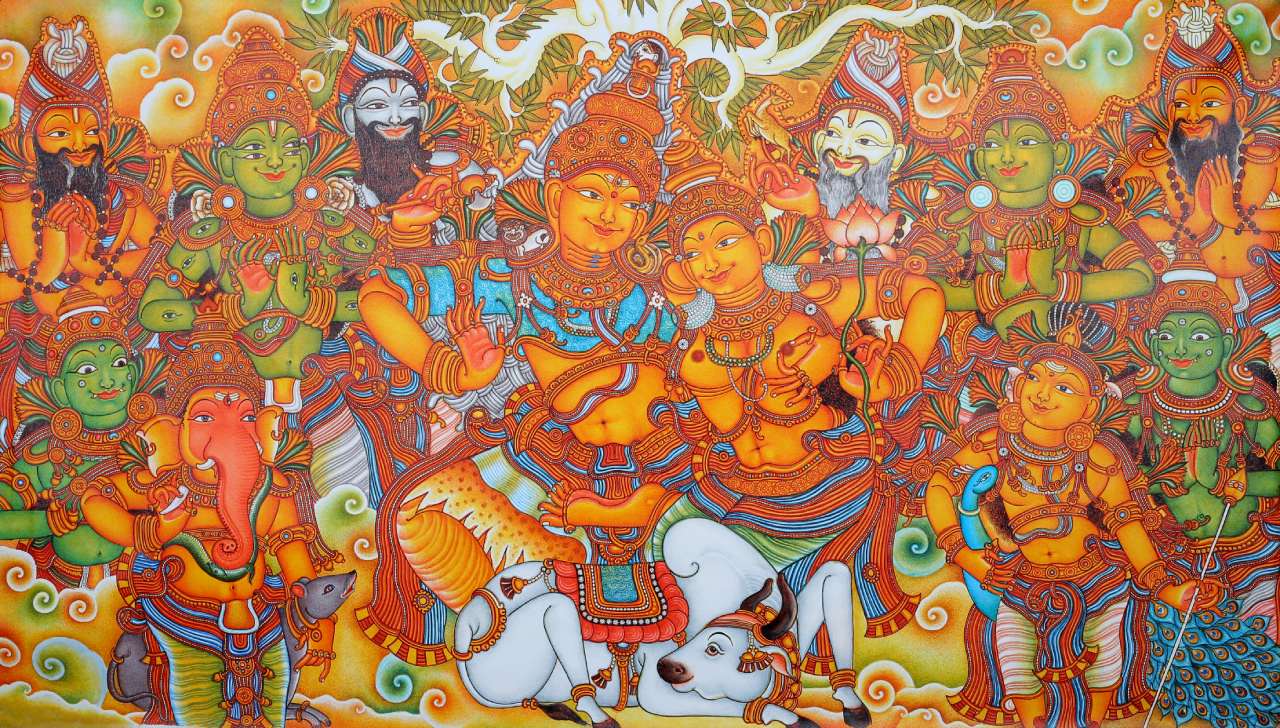Blog Details
Inspiring Presence of art painting frame
Mural Painting on June 27, 2024
Kerala, a state in the southwestern part of India, is renowned for its rich cultural heritage and artistic traditions. Among the many art forms that Kerala boasts, traditional sculpture art in temples holds a special place. These sculptures not only exemplify the artistic prowess of the craftsmen but also reflect the religious and cultural ethos of the region.
Historical Context
The history of temple sculpture in Kerala dates back to the early medieval period, around the 8th century AD, when the region saw the rise of several powerful dynasties like the Cheras and the Cholas. These rulers were great patrons of art and architecture, and under their reign, the construction of grand temples adorned with intricate sculptures flourished.
Architectural Style
Kerala temple architecture is distinct from the Dravidian style commonly seen in Tamil Nadu. It is characterized by its sloping roofs, wooden structures, and intricate carvings. The temple sculptures in Kerala are predominantly made from granite and wood. The use of wood in temple sculptures is unique to Kerala and adds to the distinctiveness of its temple art.
Themes and Motifs
The sculptures in Kerala temples primarily depict deities from Hindu mythology, such as Shiva, Vishnu, and their various avatars, along with other gods and goddesses. Additionally, scenes from the epics like the Ramayana and Mahabharata are frequently illustrated. These sculptures are not merely decorative; they serve a didactic purpose, educating devotees about mythological stories and moral values.
One of the striking features of Kerala temple sculptures is the Yakshi figure, a celestial maiden often depicted in a graceful, sensuous form. Yakshi sculptures are commonly found on the outer walls of temples, symbolizing fertility and prosperity.
Techniques and Craftsmanship
The process of creating temple sculptures in Kerala is labor-intensive and requires a high degree of skill. The traditional method involves several stages, starting with the selection of appropriate materials. Granite, being durable, is often chosen for its longevity, while wood is selected for its ease of carving and aesthetic appeal.
Sculptors, known as 'Sthapathis,' meticulously plan the design before starting the carving process. They follow ancient texts like the Shilpa Shastra, which provides guidelines on the proportions and aesthetics of divine figures. The intricate detailing and precision in these sculptures speak volumes about the craftsmanship and dedication of the artists.
Symbolism and Spiritual Significance
Each sculpture in a Kerala temple is imbued with deep symbolism and spiritual significance. For instance, the posture of a deity, the attributes they hold, and the expressions on their faces are all carefully crafted to convey specific aspects of divinity. The serene and meditative expressions often seen in these sculptures aim to evoke a sense of peace and devotion among the worshippers.
The placement of sculptures within the temple complex is also significant. Major deities are typically enshrined in the sanctum sanctorum, while subsidiary deities and decorative motifs adorn the outer walls and gateways. This hierarchical arrangement reflects the spiritual hierarchy and the cosmological principles of Hinduism.
Preservation and Contemporary Relevance
Preserving these ancient sculptures is a significant challenge due to natural wear and tear, as well as the impact of modernization. However, efforts are being made by the government and cultural organizations to conserve and restore these invaluable artworks. Moreover, contemporary artists and sculptors in Kerala continue to draw inspiration from traditional styles, ensuring that this ancient art form remains vibrant and relevant.
Conclusion
The traditional sculpture art in Kerala temples is a testament to the state's rich cultural and religious heritage. These sculptures, with their intricate details and profound symbolism, not only enhance the aesthetic beauty of the temples but also serve as a medium of spiritual expression and education. Preserving and celebrating this art form is essential to maintaining the cultural legacy of Kerala for future generations.

